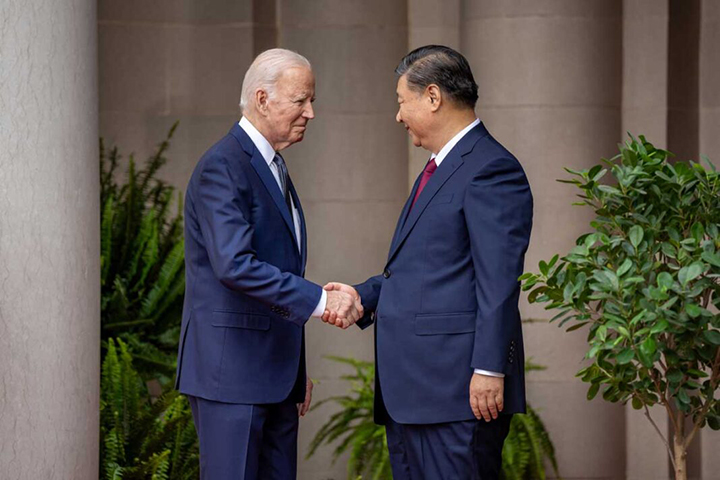Due to the agitation and the curfew, the supply system was quite disrupted last week. This increases the price of vegetables and daily necessities. However, since last Wednesday, the curfew situation has been relaxed and the traffic has become normal, so some relief has returned to the vegetable market. However, the price of Rice, Onion and Potato increased.
On Friday (July 26), it was seen that the supply of various daily commodities including vegetables increased in various raw markets of the capital. However, consumers have to buy rice, onions and potatoes at high prices as before. Potatoes are being sold at Tk 65 to 70 per kg. Onion is being sold at Tk 120 to 130 per kg. The price of narrow rice has increased by Tk 3-4 per kg.
Except Carrot, Brinjal, Tomato and Bitter gourd, customers can now buy most of the vegetables for Tk 60 to 70 per kg. Last week almost every vegetable was priced above Tk 70. Pointed gourd at Tk 50 to 60 per kg, Snake gourd and Ladies finger at Tk 60 per kg, Papaya at Tk 50 per kg, Wax gourd at Tk 50 to 60 per kg, Sweet pumpkin at Tk 40 per kg, Cucumber at Tk 80 per kg, Tomato at Tk 200 to Tk 220 per kg. Carrot is being sold at Tk 200-230 per kg, Gourd at taka 60 to 80 per kg depending on the size. Tk 50-70 per kg of Bitter gourd is being sold at Tk 80-100 per kg.
Round eggplants are being sold at Tk 80 to 90 per kg in the market. Which was 120 to 140 last week. Chilli was sold at Tk 600 per kg last week. In the market today, Green chillies are available at Tk 200 to 220 per kg.
A vegetable seller in the vegetable market of the capital said that there is sufficient supply of vegetables. Due to this, the price of all vegetables except Tomato and Carrot has decreased. Tomatoes and Carrots have to be imported.
Apart from this, Local garlic is being sold at Tk 220 per kg, imported Garlic at Tk 200 per kg, small grain Lentils at Tk 140 per kg and large grain Lentils at Tk 110 to 115 per kg.
A buyer said the heat in the vegetable market has eased somewhat after the movement and improvement in the flood situation. However, prices of Potatoes, Onions, Meat and Spices are still high.
In the space of a week, the price of Chicken decreased due to increased supply in the market. Broiler chickens are being sold at Tk 180 to 190 and Pakistani chicken at Tk 280 to 300 per kg that down by Tk 20. Apart from this, Beef is being sold at Tk 750-780 per kg and Muton at Tk 1000 to 1150 per kg. Eggs of the farm are being sold at tk 155 to 160 per dozen.
Hilsa fish weighing 1 kg is being sold in the market at Tk 1,600. Tk 380 to 400 per kg of Salmon fish. Tilapia is selling at Tk 260, Kachki Tk 500, Climbing fish at Tk 200 to 240, Prawn at Tk 700, Tengra fish at Tk 800, Pabda fish at Tk 450 per kg.
Meanwhile, Food Minister Sadhan Chandra Majumder said on Thursday (July 25) at the Secretariat about the increased price of Rice, the production of various auto rice mills was stopped due to the curfew that was issued in view of the unstable situation in the country. The car was not operating. It affects the marketing system. The supply resumed from Wednesday night. Large quantities of rice are entering from various districts including Dhaka. Hopefully, the market will return to its former form very soon. At the moment we have enough food grains in stock. There is no shortage of food, nor will there be. Endurance conditions will remain as they were before.
- Latest
- Most Viewed

Paris 2024 Olympics: Opening ceremony
7 Hour Ago

Instructions regarding Saturday curfew
10 Hour Ago

Historic Nazirpur Day observed in Netrakona
11 Hour Ago

Injured to be provided medical care: PM
12 Hour Ago

PM's speech about death of 'Abu Sayeed'
12 Hour Ago

Instructions regarding Saturday curfew
10 Hour Ago

Paris 2024 Olympics: Opening ceremony
7 Hour Ago

PM's speech about death of 'Abu Sayeed'
12 Hour Ago
Barack and Michelle Obama pledged support for Kamala Harris on Friday, filling the last major gap in her bid to unite Democrats around her dramatic, late-hour challenge against Donald Trump this November.
The boost for Harris came amid new turmoil for 78-year-old Trump, who cast into doubt whether he will debate the vice president.
Trump is scrambling to reorient an election he thought would be against an 81-year-old incumbent president beset by health worries, but which instead now features an energized replacement, two decades younger.
Harris, by contrast, has enjoyed a fast start since entering the race after President Joe Biden abruptly withdrew last Sunday and endorsed her.
The Obamas' public declaration of support delivers a new push.
The Democratic establishment's most revered power couple waited until all the other heavy hitters had come forward, finally making their move in a video released early Friday that shows Harris taking their call.
"Earlier this week, Michelle and I called our friend Kamala Harris. We told her we think she'll make a fantastic President of the United States, and that she has our full support," Barack Obama announced on X.
"At this critical moment for our country, we're going to do everything we can to make sure she wins in November."
Seeking to become the first female president in US history, Harris faces the difficult task of rapidly assembling a campaign against an opponent who has been in near permanent campaign mode since he became president in 2016, defeating another woman -- Hillary Clinton.
But while Trump has a powerful base and a head start, Harris, 59, is already making inroads. Polls that had shown Biden steadily slipping against Trump now show Harris in a race too close to call.
- No televised debate? -
A top California prosecutor and senator before being elected the country's first female and first Black and South Asian vice president, Harris has highlighted Trump's criminal conviction and what she said Thursday is a
Republican attack on "hard-fought freedoms" in US society.
Trump, who narrowly survived an assassination attempt at a rally earlier this month, was brimming with confidence at his party's convention, where his formal nomination alongside vice presidential pick J.D. Vance was more like a
coronation.
But Biden's exit three days later rattled his campaign and reversed the concerns over age, with Trump now becoming the oldest presidential nominee in history.
The shakeup has prompted Trump to lash out at Harris in extreme language, including calling her a "radical left lunatic" and claiming -- falsely -- that she is in favor of the "execution" of newborn babies.
Democrats leapt on the Trump campaign announcement late Thursday that cast into doubt whether he will debate Harris.
A second Trump-Biden televised debate had been scheduled for September 10 on ABC television. This was expected to remain in place, with Harris replacing Biden, but Trump spokesman Steven Cheung said it was "inappropriate" to
schedule when Harris was not yet formally the Democratic nominee.
Pete Buttigieg, the Biden administration's transportation secretary and a major Harris campaign advocate, mocked Trump for being "unable to adapt."
"It shows that he's afraid. It shows that he knows that if the two of them are on a stage together, it's not going to end well for him," he said on MSNBC.
"Tough talk is this guy's calling card and now there's this extraordinary show of weakness."
Source: BSS
Is Megan Fox pregnant? Actress sports baby bump in MGK's Lonely Road
Megan Fox sparked pregnancy rumours following her appearance in the music video for Lonely Road. The 38-year-old played Machine Gun Kelly's girlfriend in his recent collaboration with Jelly Roll. Fox, who has been in an on-and-off relationship with the 34-year-old rapper since 2020, sported a baby bump throughout the music video released Friday.
The music video for Lonely Road features a narrative based on MGK's troubled lifestyle. Fox, who is his real-life girlfriend, plays the role of the Till I Die rapper's on-screen pregnant lover. The credits at the end of the video feature a line that has left fans puzzled. “Introducing: Baby Violet Leika,” the line reads.
Shortly after the video was released, fans began questioning whether Fox was actually pregnant with MGK's child. Several stills featuring the couple from the music video, including a still of the rapper kissing the Till Death star's baby bump, went viral online.
Is Megan Fox actually pregnant?
“Was this a pregnancy announcement or not,” a fan wrote on Instagram. One more said, “Wait. Is Megan pregnant again?!” while another queried, “Country MGK or Megan is pregnant?! Which one took me out more?!” While neither of the artists have confirmed or denied whether Fox is pregnant, some eagle-eyed fans have apparently dug out the truth.
The baby that Fox was seen holding in the video was apparently the child of a woman named Anna, who goes by @annathedogwhisperer on Instagram. When a fan queried whether the Taurus star was pregnant in real life, Anna said that the baby was hers and Fox's bump was “just for the video.”
An X, formerly Twitter user shared a screenshot of the interaction along with the caption, “for those who are really thinking that Megan Fox just announced her pregnancy due to the credits in #LonelyRoad: Anna is the baby's mother in the music video and she responded to a user stating that Megan is NOT pregnant and that Violet had a great time with everyone on set.”
Source: HT

Nachiketa's concert postponed, what organizers said
Curfew is going on across the country due to the situation arising out of the quota reform movement. In such circumstances, there was doubt whether the pre-scheduled music concert would take place or not.
However, Nachiketa Chakraborty, a popular musician of West Bengal, will come to Dhaka to perform on the stage. But at the last moment, the concert was canceled by the organizing company named Ajob Karkhana.
In a statement on social media, the organization said that the 'Nachiketa Live in Dhaka with Joy Shahriar Volume 2' concert to be held on July 26 is not being held considering the current situation in the country. Hopefully, if the situation in the country is normal, it will be held on September 6. Those who have already purchased tickets can enjoy the concert with this ticket.
Incidentally, Nachiketa's concert was scheduled to be held on Friday (July 26) at Krishibid Institute in the capital.

Rishi's wife accused of drinking and partying with male friends
One after another divorce news in Tollywood. Actor Rishi Kaushik also in that list.
Rishi-Debjani passed an era of marriage. After a long time, there are signs of their isolation.
Rishi gave offensive posts about his wife Debjani for a few days and pointed out various allegations against his wife including smoking, drinking and partying with her friends at late night.
Without mentioning anyone's name, he said, 12 years ago, a boy and a girl got married. Although their lifestyle was very different. After realizing that, the boy didn't want to marry the girl. But the girl promised to change herself. In this sense, the boy agreed to marry her.
However, since marriage, she has not changed at all, rather it has increased gradually.
Without mentioning anyone, Rishi said, 'A girl works in a large IT company. She keeps an eye on her husband all the time because of her job. Smoking, drinking, partying with male friends at night, that's what a modern woman is!'
Rishi also said, 'The boy tried a lot in these 12 years. He worked tirelessly to maintain the family. But the girl did not cooperate. On the contrary, she has repeatedly done what the boy disliked.
However, even if Rishi is not mentioned any name, netizens are not left to understand the story. They think he spoke about his married life. At the end he asked the followers for advice. Wanted to know what to do at the moment.

Artists are stunned by death of Shafin Ahmed
Band star Shafin Ahmed will never return. He died of a heart attack in a hospital in Virginia, America on Thursday (July 25) at 6:50 am Bangladesh time.
The news of Shafin Ahmed's death has cast a shadow of mourning on the country's music scene. The death of the singer cannot be accepted by his colleagues in the cultural arena and comrades of the band movement.
Renaissance band artist, lyricist, composer Naqeeb Khan said, it is difficult for us to accept the news of his death. There is no language to say, I have lost my language. I really can't imagine such a talent leaving. We pray for his soul to rest in peace.
Foad Nasser Babu, founding member and music director of Feedback Band said, I will get such news in the morning, which has shocked me. I didn't believe it at first. Still, it seems the news may be wrong. Shafin Ahmed's song touched the hearts of the audience. We are deeply saddened by his sudden death.
Along with Miles, the band 'Souls' was popular in nineties. These two bands have many memories of the bands formation, growth, communication, stage performance together. Souls' Partho Barua is saddened by the news of Shafin Ahmed's death. He said, at the moment, he has no language to say anything.
Shafin Ahmed, son of composer Kamal Dasgupta and singer Feroza Begum. Due to family tradition, he grew up in the atmosphere of music from childhood. He learned music from his father and Nazrul Geeti from his mother.
Shafin Ahmed got acquainted with western music while studying in England with his elder brother Hamin Ahmed. In 1979, he formed the band 'Miles' as a hobby. For the first few years, they used to sing English songs in different five-star hotels. Later Miles' first album of Bengali songs was released in 1991.
Shafin Ahmed came out from Miles in January 2010, ending his three-decade journey with Miles. But his musical journey continued. His various solo albums also popular.

The Olympic Games, the biggest sporting event in the world is going to start in full swing from tomorrow (July 26). However, before the start of this tournament, several issues have been arises.
The Paris Olympic Committee provided special beds made of cardboard for competitors to prevent promiscuous sex.
Earlier, this special bed was made for athletes at the Tokyo Olympics due to Covid-19. The special bed was created by the Tokyo Olympic authorities to maintain social distancing and protect athletes from covid and not indulge in promiscuous sex.
Two people at a time is out of the capacity in this type of bed, that bed collapses. Competitors strongly objected with such beds. They complained about the beds' discomfortness.
The historic Nazirpur Day, commemorating the supreme sacrifice of seven valiant freedom fighters who embraced martyrdom in a ‘front battle’ with Pakistani soldiers during the Liberation War in 1971, was observed in Nazirpur of Kalmakanda upazila today.
Citing the history of Liberation War, leaders of district Muktijoddha Sangsad said that on July 26 in 1971, a ‘face to face war’ between the then Pakistani occupation armed forces and freedom fighters erupted in the Nazirpur area where the Pakistani forces were defeated.
Seven valiant freedom fighters laid down their lives fighting with the armed forces to free the Nazirpur area from army occupation while the freedom fighters gunned down several dozens of Pakistani soldiers and caught some others and many Razakars red-handed.
The martyred seven freedom fighters are Abdul Aziz, Mohammad Fazlul Haque, Mohammad Year Mahmud, Bhabotush Chandra Das, Mohammad Nuruzzaman, Dizendra Chandra Biswas and Mohammad Jamaluddin.
Netrakona district administration, district Muktijoddha Sangsad and Kalmakanda Upazila Muktijoddha Sangsad jointly chalked out an elaborate programme to celebrate the day.
The programme formally started in the morning with the placing of wreaths at the Nazirpur War Memorial Monument in Nazirpur area by deputy commissioner (DC) of Netrakona and also administrator of Muktizoddha Sangsad Netrakona district unit Shahed Parvez.
Then, chairman of Netrakona Zila parishad Asit Kumar Sarker Sazal, police super Netrakona Mohammad Foyaz Ahmed, president of Netrakona district Awami League (AL) Advocate Amirul Islam, general secretary of Netrakona district AL Advocate Shamsur Rahman Liton and leaders of district and Kalmakanda upazila units of Muktijoddha Sangsad placed wreaths there.
As part of the programme, wreaths were also placed at the burial ground of martyred freedom fighters in Lengura area near Nazirpur.
Following the day’s programme, a Milad Mahfil was held at Lengura bazer Jam-e-mosque after Jumma prayers.
Deputy commissioner Netrakona Shahed Parvez, chairman of Netrakona Zila parishad Asit Kumar Sarker Sazal, police super Netrakona Mohammad Foyaz Ahmed, president of Netrakona district Awami League (AL) Advocate Amirul Islam, general secretary of Netrakona district AL Advocate Shamsur Rahman Liton, leaders of district and Kalmakanda upazila Muktizoddha Sangsad, valiant freedom fighters and people from all walks of life attended the Milad Mahfil.
Later, a special prayer was offered at the mosque seeking divine blessings for eternal peace of the departed souls of the martyred freedom fighters.
The special prayers were also held at all the local mosques, temples, churches and other places of worships seeking divine blessings for eternal peace and salvation of the departed souls of the martyred freedom fighters.
A large number of freedom fighters from Netrakona district and other parts of the Mymensingh division, the local elite, political leaders, public representatives and government officials joined the day’s programme.
Source: BSS
The Executive Board of the International Monetary Fund (IMF) has approved the third tranche of $1.115 billion for the $4.70 billion loan.
The loan was approved at the beginning of a meeting held at the IMF headquarters in Washington DC on Monday (June 24) at 9:00 pm Bangladesh time. Executive Director of Bangladesh Bank Mezbaul Haque confirmed the information from the Bangladesh Bank spokesperson's office.
Md. Mezbaul Haque said, "The International Monetary Fund has officially confirmed the third installment of our loan. The IMF has approved a loan of $ 1.115 billion as the third installment. This money will be credited to our account within two working days. If added to the reserve, foreign exchange reserves will increase.
Earlier, a 10-member IMF delegation arrived in Dhaka on April 23 to discuss the third installment of the loan. A meeting was held with Bangladesh Bank on April 25. Financial sector reforms, default loans, implementation of interest rates, monetary policy, inflation, balance and outlook of foreign trade, money market and liquidity management were discussed in the meeting.
Bollywood stars attended Anant-Radhika's wedding in dazzling ethnic looks
Shah Rukh Khan with Gauri Khan, Katrina Kaif with Vicky Kaushal, and Ranbir Kapoor with Alia Bhatt arrived at Jio World Centre in Mumbai to attend the wedding of Anant Ambani and Radhika Merchant. The stars chose dazzling ethnic looks for the celebrations.
Shah Rukh Khan and Gauri Khan arrived at Anant Ambani and Radhika Merchant's wedding and posed for the paparazzi. SRK looked dapper in a mint green bandhgala sherwani jacket, grey-coloured kurta, matching dhoti pants, dress shoes, a polki necklace, and sunglasses. Meanwhile, Gauri complemented him in a golden anarkali suit set featuring a sequin embellished kurta and flared pants. She accessorised the look with a potli bag, a diamond necklace, jhumkis, and high heels.
Alia Bhatt stole the show at Anant Ambani and Radhika Merchant's wedding in a Rani pink silk saree adorned with gold brocade embroidery. She wore the nine yards of grace with an embellished strapless blouse, a gold and emerald choker, jhumkis, a mang tika, a potli bag, and a centre-parted bun adorned with rose gajra. Meanwhile, Ranbir complemented his wife in a cream brocade sherwani jacket, matching kurta, flared pants, and dress shoes.
Katrina Kaif and Vicky Kaushal wore traditional ensembles to attend Anant Ambani and Radhika Merchant's wedding ceremony today. Katrina, rumoured to be pregnant, wore a red saree featuring gold Resham embroidery, sequin embellishments, and scalloped gota borders. She styled the ensemble with a matching full-sleeve blouse, a luxurious necklace, jhumkis, centre-parted loose tresses, kohl-lined eyes, rouge-tinted cheeks, and a nude lip shade. Meanwhile, Vicky wore a floral cream sherwani styled with an embroidered dupatta.
Source: HT

Anant Ambani wedding: India tycoon’s son marries after months of festivities
Anant Ambani, the son of India's richest man, ties the knot with his partner Radhika Merchant. Justin Bieber, Priyanka Chopra, and former Swedish Prime Minister Carl Bildt were among those attending the grand wedding.
Anant Ambani and Radhika Merchant married Friday in a ceremony that has seen A-list stars fly into Mumbai for a grand weekend of celebrations.
Anant is the son of Mukesh Ambani, who is India's richest man. He tied the knot with his longtime girlfriend, Radhika Merchant, the daughter of pharmaceutical magnate Viren Merchant.
While the couple married in a traditional Hindu ceremony on Friday, it was the attendees in the room that drew media attention like no other wedding this year.
Social media platforms saw Kim Kardashian and Justin Bieber, and Hollywood wrestler John Cena join in on the fun.
As did a host of political figures, like former British Prime Ministers Boris Johnson and Tony Blair, former US Secretary of State John Kerry, former Canadian Prime Minister Stephen Harper, and former Swedish Prime Minister Carl Bildt.
Among business leaders, Aramco CEO Amin Nasser, Samsung Electronics Chairman Jay Lee, FIFA President Gianni Infantino and Lockheed Martin CEO James Taiclet were reportedly also present, according to Indian media outlets.
Mukesh Ambani hired 100 planes, including three Falcon-2000 jets, to fly his guests to the party, according to Reuters.
Who is Mukesh Ambani?
The 67-year-old Mukesh Ambani is the chairman of Reliance Industries, which has interests in petrochemicals, oil and gas, telecom, retail and financial services.
With a fortune of over $123 billion (€113 billion), he is ranked as the 11th richest person in the world, according to the Forbes billionaires list.
He is also an important ally of India's right-wing Hindu nationalist leader, Prime Minister Narendra Modi.
Critics of Ambani said his company has thrived mainly because of political connections during the Congress governments in the 1970s and 80s and later under Modi's rule since 2014.
The grand Indian wedding
A recent report by Outlook put the estimated cost of the entire wedding celebration at Rs 4,000-5,000 crore (approximately $600 million), which amounts to just 0.5% of the Ambanis' net worth.
While Anant's engagement ceremony was a private affair at a temple in the northern state of Rajasthan, it was followed by a string of celebratory events that featured performances by pop stars, including Rihanna and Justin Bieber.
In March, Mukesh Ambani threw a pre-wedding bash for the couple in Gujarat, which was attended by nearly 1,200 people from around the world, including tech moguls Bill Gates and Mark Zuckerberg and former US President Donald Trump's daughter Ivanka.
Singer Rihanna charged between $8-9 million for her performance at the event, according to some Indian media reports.
In May, the Ambanis and their guests jetted off on a four-day luxury cruise in Europe.
Early in July, Ambani and his wife Nita hosted a mass wedding for 50 underprivileged couples ahead of their son's wedding.
Last week, Canadian singer Justin Bieber held a performance as part of the latest pre-wedding festivities of the billionaire heir.

When is the Ambani wedding? And why have they been celebrating for 7 months?
For better or for worse, days-long wedding events have become common in cultures around the world. Between Friday night cocktail receptions and sore-headed Sunday brunches, what might once have been a half-day affair can now easily envelop three or four days.
But a wedding that spans seven months is an outlier even in the extravagant world of big Indian weddings.
On Friday, Anant Ambani the youngest son of Mukesh Ambani, the head of India’s largest private sector corporation, with an estimated net worth of over $122 billion, according to Forbes and pharmaceutical heiress Radhika Merchant will finally be married. The couple have been celebrating their betrothal since January, averaging an event every six weeks.
From a star-studded engagement party to performances by the likes of Rihanna and Justin Bieber, no expense has been spared. If you’ve lost track of where the Ambanis are at with their nuptial celebrations, and what lavish bashes have already taken place, read on for a full timeline of what’s expected to be the wedding of the year.
December: The engagement
On December 29, Anant Ambani kept things low-key as he proposed to Radhika Merchant at a temple in the northern Rajasthan state surrounded by family and close friends.
January: The engagement party
Merchant took part in a traditional 'mehndi' ceremony on January 18, when her hands and feet were decorated with henna. The following day the pair threw their 'Gol Dhana' engagement party, drawing in some of the biggest names in Bollywood. Actors Aishwarya Rai Bachchan, Deepika Padukone and Ranveer Singh were among the famous faces in attendance.
March: Pre-wedding party
Don’t be fooled by the name, this get-together preceded the Ambani’s actual wedding by over four months. Staged in the city of Jamnagar, in the western state of Gujarat, the event (which had a guest list of 1,200 people) featured choreographed Bollywood-style dancing, fireworks and a feast of 500 dishes cooked by around 100 chefs. The evening even saw Rihanna perform for only the second time in six years.
The event was a who’s who of the rich and powerful. Tech billionaires Mark Zuckerberg and Bill Gates were there, each dressed in traditional embellished Kashmiri coats while Ivanka Trump and husband Jared Kushner arrived with their daughter. Ahead of the party, the Ambani family also hosted a communal dinner for more than 50,000 villagers outside Jamnagar.
May: The European cruise party
The Ambanis set off on a four-day European cruise aboard a luxury chartered ship, beginning in the Sicilian city of Palermo and ending in Rome. Despite a strict no-phones policy, leaked social media videos showed on-deck concerts from the Backstreet Boys, Pitbull and David Guetta.
There were a few stops on the way, too: A masquerade ball at the Chateau de la Croix des Gardes mansion in Cannes featured a performance by Katy Perry, while an evening event in Portofino on the Italian Riviera saw the main square cordoned off to the public, before Italian tenor Andrea Bocelli performed for guests.
July 2-5: Mass wedding and musical night
On July 2, the couple staged a mass wedding, also known as 'Samuh Vivah,' in the town of Palghar, around 70 miles from Mumbai. More than 50 underprivileged couples were invited to receive gifts, ranging from gold ornaments to a year’s worth of groceries.
A few days later, at the Nita Mukesh Ambani Cultural Center (a Mumbai arts venue founded by Anant's mother, Nita), the Ambanis hosted a traditional night of music and dance, known as the 'sangeet,' which featured a live performance from Justin Bieber.
July 8: The Haldi
On Monday, the couple took part in a 'haldi' ceremony, a pre-wedding ritual that traditionally sees friends and family bless the marrying couple by applying a turmeric paste to their heads, faces or bodies. The pair appear to have kept the event private, though photographs later shared online showed the couple wearing suitably complementary gold and yellow outfits a bejeweled Merchant in a custom ensemble by celebrated Indian designer Anamika Khanna and the groom in a kurta and jacket by Sandeep Khosla.
Friday: Main ceremony
The wedding proper is set to commence on Friday at the 16,000 capacity Jio World Convention Center, complete with a red carpet to showcase A-list attendees clad in per the dress code classical Indian attire. The internet is awash with rumors of the performer lineup, from Adele and Drake to Lana Del Rey, but one thing is certain: There will be no expense spared.
Saturday: Divine blessings ceremony
The day after the nuptials will see one of the last stages of the Hindu wedding schedule: the 'Shubh Ashirwad,' or divine blessings ceremony. Here, the couple seeks 'Ashirwad,' or blessings, from the elders in their community and are usually showered with rose petals or rice when walking down the aisle again.
Sunday: The reception
The mammoth festivities conclude on Sunday with one final celebration of the couple: the 'Mangal Utsav,' or reception. Guests have been to dress in 'Indian chic.' Saturday and Sunday's events are expected to take place at the Ambani family's 27-story residence, Antilia.
Source: CNN

Food trends of 2024
As the culinary world continues its ever-evolving journey, staying ahead of food trends can be as exciting as it is delicious. The year 2024 is set to bring a smorgasbord of new flavours, health-focused ingredients, and climate-conscious eating habits that will not only tantalise our taste buds but also promote a greater good. From the viral dishes of TikTok to the mindful choices of sustainably sourced foods, there's a shift towards balance; a fusion of indulgence with wellness, and convenience with consciousness.
Let's explore the Food trends in 2024 that are poised to redefine our eating experiences:
TikTok Food Trends in 2024
Cottage Cheese
The humble cottage cheese is making an impressive comeback as TikTok creators champion its versatility.
No longer just a diet food, it's being reimagined in everything from hearty breakfast bowls to decadent desserts.
Rich in protein and adaptable to savoury and sweet dishes alike, it's the perfect canvas for a range of ingredients.
Trending are 'cottage cheese pancakes' and 'whipped cottage cheese dips', which are not only nutritious but also incredibly Instagram-worthy. As a food that supports muscle maintenance and satiety, cottage cheese is finding its way back into the hearts and fridges of foodies everywhere.
Greens Drinks & Powders
Greens drinks and powders are stealing the show as the MVPs of quick nutrition.
Their appeal lies in the blend of numerous vegetables and fruits, offering a concentrated dose of vitamins and minerals with minimal effort.
For those short on time, these powerhouse drinks act as a nutrient infusion, perfect for a post-workout boost or a midday pick-me-up.
The increased interest in gut health and immune support is only bolstering their popularity. With a range of options from spirulina to wheatgrass, these greens drinks and powders are making wellness accessible to everyone.
Coffee and Greens
Imagine starting your day with a blend of two powerhouses: coffee and greens.
This trend caters to those who refuse to choose between their morning jolt of caffeine and the nutritional benefits of greens.
Cafes and homebrew enthusiasts alike are crafting concoctions that combine the rich, bold flavours of coffee with the nutrient-rich profiles of greens powders.
This synergy not just maximises energy but also introduces an easy health boost. As people continue to search for ways to optimise their health without sacrificing their pleasures, coffee infused with greens is set to become a staple.
French Yogurt Cake
The French Yogurt Cake, with its delightful simplicity, underscores the growing trend of home baking that emphasises both ease and authenticity.
Known for its moist texture and adaptability, it's a recipe that invites experimentation with various fruits, flavours, and flours.
The cake's rustic charm is enhanced by its "use-the-container" measurement technique, which adds to its charm and approachability. Whether it's adding lemon zest for a tang or a dollop of jam for sweetness, this cake encourages personal touches, making it a favourite for both novice bakers and seasoned pros.
Lifestyle Food Trends in 2024
Climate-Conscious Foods & Sustainability
In 2024, climate-conscious foods are not just a trend; they're a growing movement.
As awareness of our food's environmental impact increases, consumers are demanding more sustainable options.
This trend sees a surge in plant-based diets, locally sourced produce, and minimal-waste cooking.
Eateries and brands are responding by highlighting their carbon footprint or using upcycled ingredients. It's now more common to find menus and products that boast eco-friendly credentials, from regenerative agriculture to zero-plastic packaging, highlighting the shared responsibility we hold towards our planet.
Girl Dinner
You might have seen "Girl Dinner" doing the rounds on TikTok. It's a trend that's all about simplicity and satisfaction when it comes to your evening meal. Forget the traditional entrées and instead, think of a snack board that's just to your liking. A slice of crusty bread, some cheese, a bit of fruit, and a handful of pickles is what you'll typically find on a "Girl Dinner" plate.
But here's the kicker: it's entirely what you make of it. Whether it's reaching for those comforting snacks you love, diving into some leftovers for a no-fuss twist, or just assembling a plate of whatever you're in the mood for – that's the essence of a "Girl Dinner." It's a personal feast that's easy to put together and perfect for those nights when you're dining solo or with friends but still want to keep things casual and enjoyable.
Island Flavours
2024 is the year of tropical escapism at the dining table. Island flavours, with their exotic and bold profiles, are taking centre stage.
Ingredients like jackfruit, coconut, and an array of spicy chillies provide a culinary getaway to island life.
This trend is not just about the food but also about the experience, aiming to capture the laid-back and joyful spirit of the islands. Meals are becoming more colourful and vibrant, with a zest that's reminiscent of a beachside feast.
Greens
Greens continue to enjoy their spot in the limelight as a staple for health-conscious individuals. This trend goes beyond the humble salad; it's about incorporating a variety of greens into every meal.
Kale, spinach, and chard are now joined by microgreens and sea vegetables, offering depth to the category.
Creative recipes that make greens the star of the dish are trending, such as green smoothie bowls, kale pesto, or collard green wraps, demonstrating that greens can be both versatile and delicious.
Pasture-Raised Meat and Eggs
The conscientious carnivore is on the rise, which is why pasture-raised meats and eggs are carving out a significant place in the market.
This method of farming allows animals to roam freely, resulting in better nutrition and flavour.
It aligns with a more ethical approach to consumption, as it ensures a higher standard of animal welfare.
Consumers are ready to invest in these products as part of a healthier and more responsible lifestyle choice, knowing that what they consume directly impacts not only their health but also the well-being of animals.
Ingredient Food Trends 2024
Spirulina
This blue-green algae is experiencing its well-deserved moment in the superfood spotlight. Spirulina is being embraced in 2024 for its impressive nutritional profile which includes proteins, vitamins, and minerals while being low in calories.
It's a favourite amongst vegans and health enthusiasts for its plant-based iron and B12 content.
Spirulina is cropping up in everything from smoothies and energy bars to savoury snacks, bringing a vibrant hue that's as visually appealing as it is beneficial for health. Its sustainability as a crop that requires minimal water and land adds to its rising popularity as an eco-friendly nutrient source.
Ginger
Ginger, the ancient root with a zesty kick, continues to be celebrated for its medicinal properties as well as its culinary versatility.
Recognised for aiding digestion and reducing inflammation, ginger is being incorporated into daily diets in creative ways. You'll find it lending its warm, spicy notes to everything from morning juices and wellness shots to marinades and desserts.
As a natural remedy for common ailments and a beloved flavour enhancer, ginger remains a cornerstone in culinary trends, beloved for both its health benefits and its comforting, familiar taste.
Turmeric
Turmeric, the golden spice known for its anti-inflammatory and antioxidant properties, is taking the food and wellness industry by storm.
As people become more proactive about their health, turmeric is being used not just in curries but in lattes, soups, and even breakfast cereals.
Its active compound, curcumin, is credited with numerous health benefits, making turmeric a go-to ingredient for those looking to boost their immune system or support joint health.
Its vibrant colour and earthy flavour make adding a dose of turmeric to meals both a visual and sensory pleasure.
Yuzu Fruit
Yuzu, a fragrant citrus fruit from East Asia, is capturing the hearts of culinary enthusiasts with its unique and tantalising flavour profile.
This tart and aromatic ingredient is being used to add a refreshing twist to sauces, cocktails, and desserts. Its popularity extends beyond its taste; yuzu is also rich in vitamin C and antioxidants.
With its bright and bold flavour, yuzu adds an exotic touch to dishes and has become a symbol of culinary innovation and fusion cuisine.
Antioxidants
Antioxidants have become a buzzword for good reason, and their prevalence in diets is only growing.
These powerful compounds, found in a variety of fruits and vegetables, are crucial for fighting oxidative stress and promoting overall health. Foods rich in antioxidants like berries, nuts, and dark chocolate are being highlighted for their anti-aging and disease-preventing potential.
As consumers become more educated on the benefits of antioxidants, they are increasingly sought after in ingredient lists for their ability to nourish the body and combat environmental stressors.
Beverage Trends 2024
Green Tea
Green tea is blossoming in popularity for its delicate flavour and well-documented health benefits. As a beverage, it's revered for its high antioxidant content and its potential to enhance mental clarity and metabolic rate.
In 2024, green tea is being reinvented in various forms – from cold brews and lattes to green tea-infused beverages, expanding its reach beyond traditional hot brews. Its versatility is also celebrated in cocktails and non-alcoholic beverages, offering a touch of sophistication and a health-conscious twist to refreshment.
Asian Flavours
Asian flavours are taking the beverage industry by storm, with an array of traditional and innovative drinks that intrigue the palate. Ingredients like matcha, yuzu, and lemongrass are being blended into teas, coffees, and cocktails, providing a deliciously distinct taste.
These flavours not only offer a cultural experience but are also frequently associated with health benefits, appealing to consumers who wish to explore diverse taste profiles while maintaining a focus on wellness.
Detox Drinks
Detox drinks are more than just a fad; they're a reflection of the growing desire for beverages that support a healthy lifestyle.
These drinks often include ingredients like cucumber, lemon, mint, and ginger, known for their cleansing properties. 2024 sees a surge in detox drink options that claim to aid in digestion, boost immunity, and support liver function. They're the perfect accompaniment to a balanced diet, and their appeal lies in the promise of purifying the body while providing hydration.
Hydration Hacks
Innovative hydration hacks are revolutionizing the way we drink water.
This trend sees the infusion of vitamins, minerals, and electrolytes into water to enhance its hydrating power.
Flavoured hydration sachets, water with added collagen, and alkaline water varieties are just a few examples of how hydration is being taken to the next level.
These hacks not only cater to the health-conscious consumer but also make staying hydrated a more enjoyable and beneficial experience.
Supplement Trends in 2024
Aloe Vera
Aloe vera is well-known for its soothing properties in skincare, but as a supplement trend in 2024, it's making waves for its internal benefits.
Packed with vitamins, enzymes, and amino acids, aloe vera supplements are sought after for digestive health and immune support.
They're available in various forms, such as capsules, juices, and powders, catering to different preferences and lifestyles. As people become more attentive to gut health and natural remedies, aloe vera's popularity as a gentle, nourishing supplement continues to grow.
Ashwagandha
Ashwagandha, an adaptogen with ancient roots in Ayurvedic medicine, is increasingly embraced for its ability to help the body manage stress.
This powerful herb is linked to numerous health benefits, including improved mental clarity, energy levels, and overall vitality. As modern life becomes busier and more stressful, ashwagandha supplements in the form of capsules, powders, and teas are becoming essential for those looking to maintain balance and well-being.
Vitamin B12
Vitamin B12 is crucial for nerve tissue health, brain function, and the production of red blood cells.
Notably important for vegetarians and vegans who may not get enough from their diet, B12 supplements in 2024 come in various forms, including traditional tablets, sublingual melts, and fortified foods.
With a growing awareness of dietary needs and the importance of this essential vitamin, B12 supplements are a key trend for supporting a healthy lifestyle.
Vitamin D
As the "sunshine vitamin," Vitamin D continues to be essential, especially with increased indoor lifestyles and in regions with less sun exposure.
Recognised for its role in bone health and immune function, Vitamin D supplements are recommended to help maintain optimum levels throughout the year.
Available as drops, tablets, and even in spray forms, Vitamin D supplementation is a simple but effective way to support health, particularly during the darker months.
Pre & Probiotics
The dynamic duo of prebiotics and probiotics is leading the charge in the supplement world for a thriving gut microbiome.
As research underscores the importance of gut health for overall well-being, including mental health, supplements that combine both prebiotics (to feed beneficial bacteria) and probiotics (to add more of these beneficial bacteria) are becoming increasingly popular.
These supplements support a balanced digestive system and are often credited with promoting better skin health, improved digestion, and even a stronger immune response.

Start Prayer Time
Date : 27 Jul, 2024

When a brand faces an attack by external factors, it is crucial to respond strategically to protect its reputation and maintain consumer trust. The two cases of Lux vs Aromatic on the Halal-Haram soap controversy and the recent boycott of Coke or pro-Israeli brands provide valuable insights into how such crises can be managed.
In the case of Lux and Aromatic, Aromatic, a new soap company, claimed that their soap was Halal because it was made from vegetable oil. They targeted Unilever's soap brands like Lux, Lifebuoy, and Rexona, which used tallow in their soap blend. By exploiting consumers' religious feelings, Aromatic gained a significant market share, leading to a substantial drop in revenue for Lever (currently known as Unilever) Bangladesh. It was the first time the company had incurred such significant losses since its inception in 1963. Unilever's internal findings revealed that the decline was also due to complacency in product quality, as their dominant market position had led to a lack of innovation and effort.
Unilever responded by declaring a crisis situation and implementing a series of strategic actions. Instead of engaging in the Halal-Haram debate, which was against their corporate policy, they focused on improving product quality. They redesigned their soap manufacturing facilities to use vegetable oil and imported soap noodles from Malaysia to react faster. Despite the time it took to implement these changes, Unilever's focus on quality and a comprehensive product relaunch for Lux and Lifebuoy eventually helped them regain their market position. In Bangladesh, marketing products based on religious sentiments was perceived to be illegal. The company made efforts to lobby at the governmental level, but these efforts proved unsuccessful due to the opposition of a powerful minister, whose reasons for opposition remain speculative. Today, the case of Aromatic remains a case study book.
On the other hand, Coca-Cola recently faced a boycott in Bangladesh for its perceived associations with pro-Israeli or pro-American sentiments. The local brand Mojo capitalized on this sentiment by aligning itself with pro-Palestinian views. Coca-Cola attempted to counter the boycott by challenging the misconceptions directly. However, their efforts backfired and became a global case overnight. A global company like Coca-Cola may consider implementing a comprehensive strategy that includes innovative and large CSR projects, promoting product quality over competition, introducing new health products, or emphasizing local contributions to the Bangladesh economy. Additionally, Coca-Cola could have strengthened their local engagement through local platforms like Coke Studio, which might have helped mitigate the negative impact. It may not have given them an immediate revenue increase, but it could possibly create a strong foundation to regain lost ground gradually.
In comparing these two cases, Unilever handled the crisis more effectively than Coca-Cola. Unilever's approach was strategic and focused on long-term sustainable solutions. By improving product quality and manufacturing processes, they addressed the root cause of consumer dissatisfaction and gradually restored their market position through a well-executed product relaunch. Coca-Cola's response was more reactive and lacked the comprehensive strategic elements that could have reinforced its brand during the boycott. A silent approach to combat the battle could have been more productive for Coke.
When a brand and its products are attacked by external threats triggered by geopolitical or religious issues, it is crucial to respond thoughtfully and strategically. Staying informed and maintaining neutrality is essential to avoid alienating any group, while transparent communication through multiple channels helps address concerns without bias. Monitoring and adapting strategies based on feedback, focusing on long-term relationships with stakeholders, and maintaining a crisis management plan ensure preparedness and resilience. They help in navigating external threats, maintain consumer trust, and protect the brand’s reputation.
The author is the ex-CEO of Robi & founder and Managing Director of BuildCon Consultancies Ltd

 Live Tv
Live Tv








































































